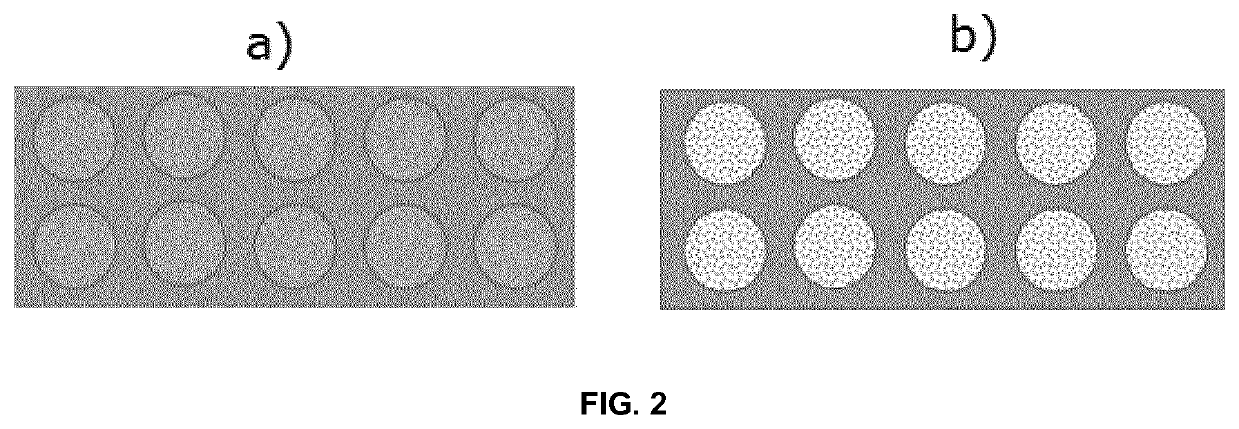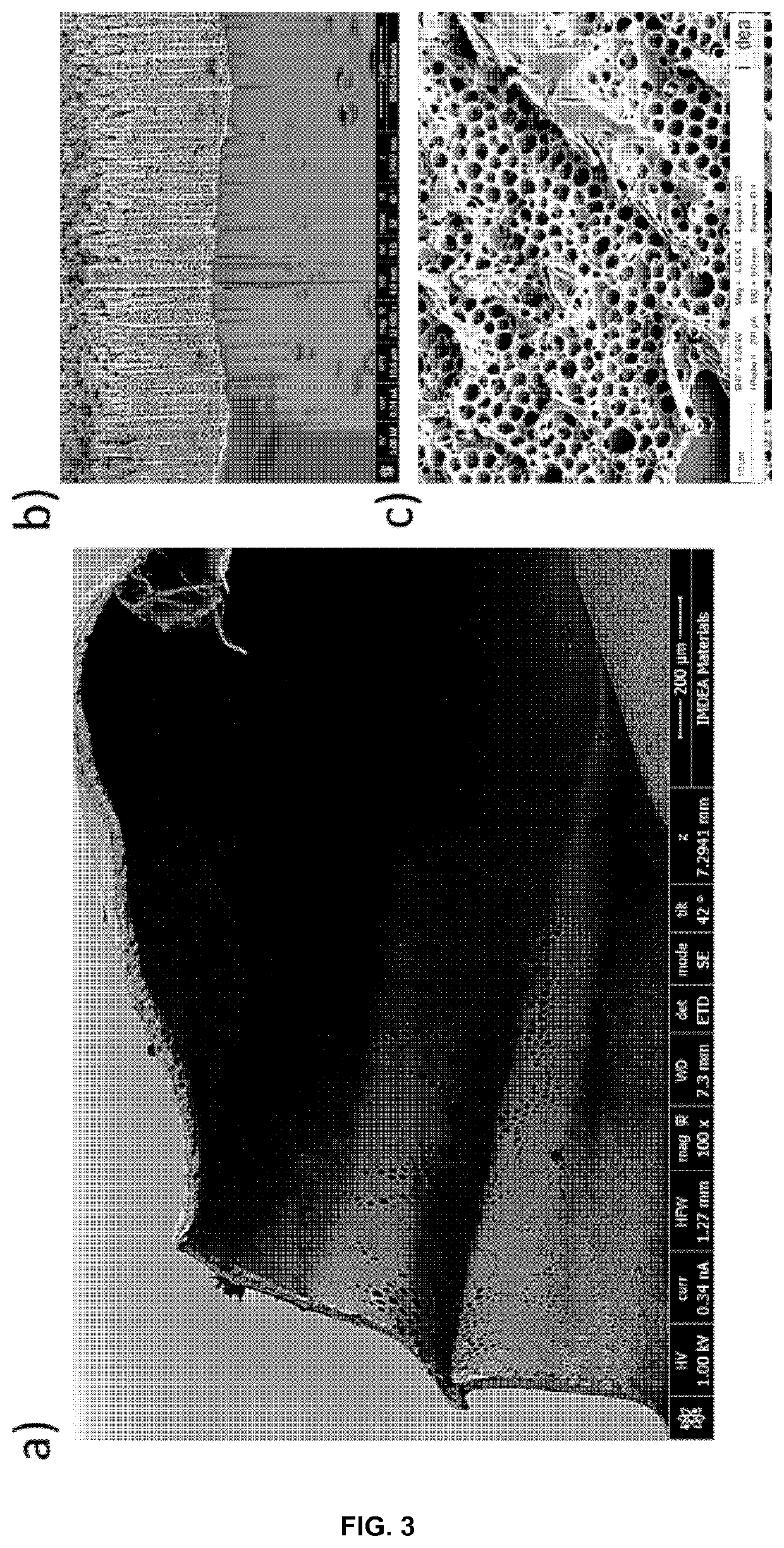Composite comprising CNT fibres and an ionic conducting compound as part of an energy storage device
a technology of ionic conducting compound and energy storage device, which is applied in the direction of carbon nanotubes, filled nanotubes, inorganic chemistry, etc., can solve the problems of limiting the capacitance of the device and therefore the device performance in power and energy densities, reducing the mechanical properties of the electrode, and cumbersome cited procedures
- Summary
- Abstract
- Description
- Claims
- Application Information
AI Technical Summary
Benefits of technology
Problems solved by technology
Method used
Image
Examples
example 1
ization of the CNT Fibers and the Laminate Composite of the Invention
[0097]FIG. 1 presents an example of the fibre, which is a continuous macrosocopic filament. Because it is comprised of CNTs it has a high porosity (a) and a surface are of around 200 m2 / g, that is, about 1000 times higher than CF. This material is also strong and has proven to be easily integrated in composites to produce very strong and light structures.
[0098]FIG. 2 presents a schematic comparison of the cross-sections of a CF composite and a porous CNT fibre composite (present invention), respectively. The much larger specific surface of the CNT fibre results in a better charge storage system. A comparison of standard electrochemical tests of these materials give a specific capacitance of about 0.5-3F / g for CF and around 40F / g for the CNT fibres.
[0099]This porosity not only increases overall charge storage performance, but also helps solve one of the main challenges in structural supercapacitors: simultaneous cha...
example 2
l Electrochemical Capacitor by Solution Impregnation Method and Ionic Polymer
[0101]A structural electrochemical capacitor comprising two laminate composites composed of CNT fibers, being the active material, impregnated with one ionic conducting compound acting as electrolyte by using a solution impregnating method. The ionic conducting compound is a binary blend of an ionic polymer, in particular a polycation, and a salt that can be combined at different mass ratios. The ionic polymer is poly(diallyldimethylammonium) bis(trifluoromethanesulfonyl)imide (pDADMATFSI) and the salt is an ionic liquid named N-methyl-N-butylpyrrolidinium bis(trifluoromethanesulfonyl)imide, (PYR14TFSI). In the present example the ratio of polymer / salt is 40 / 60 in weight. This ratio was selected because it provided self-standing membranes with an optimum balance between mechanical stability and ionic conductivity (from 10−7 to 10−1 S / cm in the temperature range of −30° C. to 120° C.).
[0102]In this example C...
example 3
l Electrochemical Capacitor by Non-Solution Impregnation Method and Non-Ionic Polymer
[0109]A structural electrochemical capacitor comprising two laminate composites composed of CNT fibers, being the active material, impregnated with one ionic conducting compound acting as electrolyte by using a non-solution impregnation method. The ionic conducting compound is a binary blend of a non-ionic polymer and a salt that can be combined at different mass rations. The non-ionic polymer is poly(vinylidene fluoride) (average Mw ˜534,000,) and the salt is an ionic liquid named N-methyl-N-butylpyrrolidinium bis(trifluoromethanesulfonyl)imide, (PYR14TFSI). In the present example the ratio of polymer / salt is 40 / 60 in weight. The ratio was chosen due to possibility to obtain a self-standing membrane with an optimum balance between mechanical stability and ionic conductivity (from 10−7 to 10−1 S / cm in the temperature range of −30° C. to 120° C.).
[0110]In this example CNT fiber electrodes have circul...
PUM
| Property | Measurement | Unit |
|---|---|---|
| electrical conductivity | aaaaa | aaaaa |
| specific surface area | aaaaa | aaaaa |
| aspect ratio | aaaaa | aaaaa |
Abstract
Description
Claims
Application Information
 Login to View More
Login to View More - R&D
- Intellectual Property
- Life Sciences
- Materials
- Tech Scout
- Unparalleled Data Quality
- Higher Quality Content
- 60% Fewer Hallucinations
Browse by: Latest US Patents, China's latest patents, Technical Efficacy Thesaurus, Application Domain, Technology Topic, Popular Technical Reports.
© 2025 PatSnap. All rights reserved.Legal|Privacy policy|Modern Slavery Act Transparency Statement|Sitemap|About US| Contact US: help@patsnap.com



